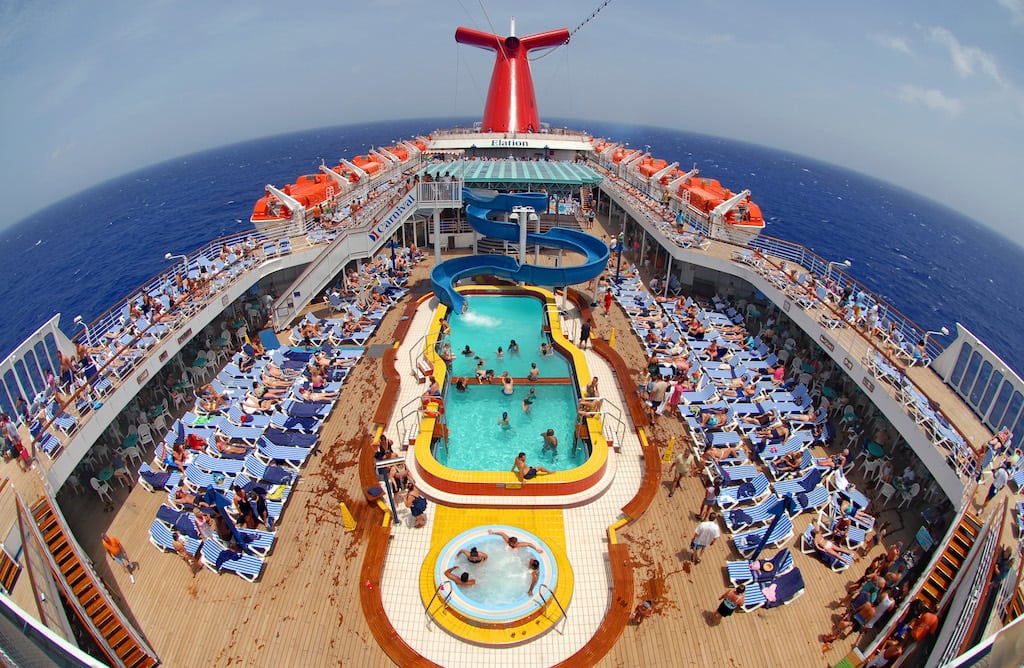Skift Take
Carnival Corporation pulled off a surprisingly good quarter despite global uncertainty, though capacity growth in China seems to be worrying some on Wall Street.
Travel companies have been reeling since British voters decided late last week to leave the European Union, but Carnival Corp. president and CEO Arnold Donald sees a potential silver lining to the sterling’s fall.
“Despite the geopolitical events in Europe, including the Brexit vote, we remain confident in our long term outlook given the attractive value proposition our strong and diversified brand portfolio offers,” Donald told analysts during the company’s second-quarter earnings call Tuesday.
He continued, noting that the value proposition was strong “particularly in the UK where our local brands P&O Cruises and Cunard — sold in British pounds — have an increasingly competitive advantage to land-based vacation alternatives in Europe and abroad.”
Other than the impact of currency exchange rates, the global cruise giant is not, at least at this point, forecasting any downturn in business due to the UK’s vote to leave the EU.
Even as uncertainty over the vote weighed on Europe for the last few months, Carnival reported a stronger-than-expected second fiscal quarter. Revenues increased from $3.6 billion last year to $3.7 billion this year, while net income soared from $222 million to $605 million. Costs came in lower than expected for the quarter, which ended May 31.
Higher ticket prices and onboard spending, especially at bars and casinos, helped Carnival beat expectations.
“This was among the most remarkable quarters in the history of the company,” Donald said.
Like other cruise players this year, Carnival said destinations in the Caribbean and Alaska were proving popular with cruisers from North America, while Mediterranean itineraries were a tougher sell for those travelers primarily due to “geopolitical events” such as the terror attacks in Paris and Brussels. The parent company’s North American brands include Carnival Cruise Line, Princess Cruises, Holland America Line, Fathom, and Seabourn.
But European brands such as Costa Cruises, AIDA Cruises, Cunard, and P&O — which typically draw passengers from the regions where they’re based — have “held up well,” Donald said.
For next year, Carnival Corp. is reducing its presence in Europe while growing capacity in the Caribbean and Alaska, a shuffling Donald described as “rebalancing our portfolio to optimize the current demand environment.”
The China Challenge
The company will see a 30 percent capacity uptick in China next year, following an increase of more than 60 percent this year — huge numbers that appear to have investors worried.
Donald and chief financial officer David Bernstein were careful to point out that the percent increases seemed large because they were building on small numbers. China represents 5 percent of Carnival’s global deployment for 2016, and will grow to 6 percent of capacity next year.
“In China, our occupancy levels remain comparable to the high levels we have consistently achieved as we introduce hundreds of thousands of new-to-cruise to our brand,” Donald said. He said the penetration rate for the market is less than 1 percent, and earnings have been proportionate to capacity growth.
But ticket prices are lower as China absorbs new ships not only from Carnival brands but also from competitors including Royal Caribbean.
“We had previously indicated that the ticket prices were higher than the fleet average,” Bernstein said. “And at this point in time, the ticket prices are in line with the overall fleet average, but it’s really an apples and oranges comparison, because in China you’ve got a much higher percentage of the fleet is in the contemporary brands.”
In other words, the ships sailing in China are not from the luxury brands that command top dollar, but rather the larger vessels that attract mass-market (and more budget-conscious) passengers. So, Bernstein argued, stacking the pricing in China up against the entire group of more than 100 ships isn’t quite fair — even though the cruise company has made that exact comparison in the past.
Despite the lower pricing, Donald said he remained confident in the long-term prospects for the market.
“Overall, China remains a robust opportunity and we’re still at the very, very beginning of it,” Donald said.
In a note to investors titled “The China Concern,” UBS Investment Research analyst Robin Farley wrote that China operations still add value to the company’s earnings and pricing is higher than the average for the individual brands that are there.
“The concern among investors is that as more supply is added to China, pricing could decline to the point where it is not accretive on all these levels,” she wrote. “So despite the raise in ’16 yield guidance, the China controversy will continue in ’17.”
The Daily Newsletter
Our daily coverage of the global travel industry. Written by editors and analysts from across Skift’s brands.
Have a confidential tip for Skift? Get in touch
Tags: carnival, cruise, earnings
Photo credit: Guests on the Carnival Elation. Carnival's parent company revealed higher-than-expected earnings this quarter. Andy Newman / Carnival Cruise Line
